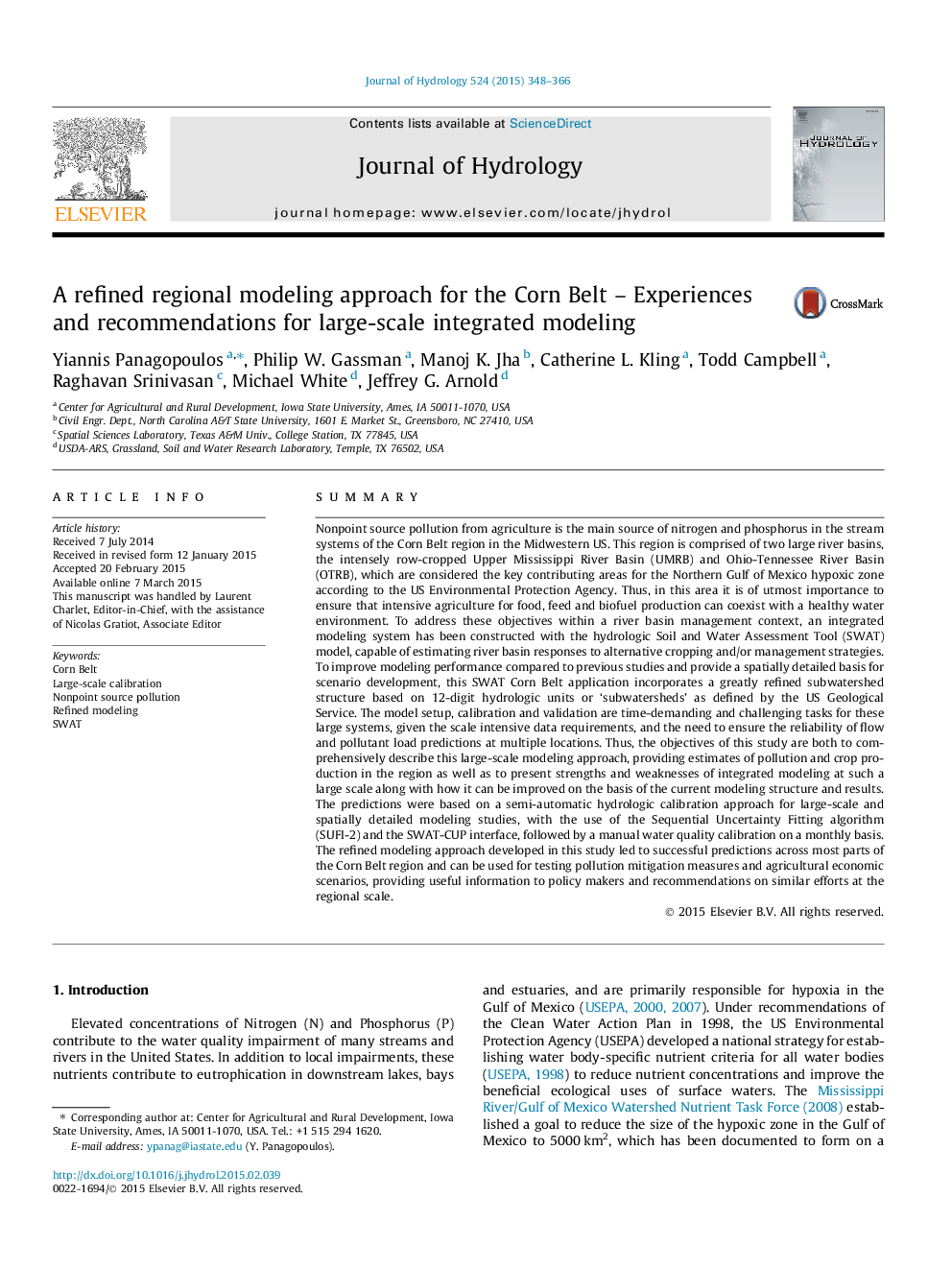| کد مقاله | کد نشریه | سال انتشار | مقاله انگلیسی | نسخه تمام متن |
|---|---|---|---|---|
| 6411425 | 1629926 | 2015 | 19 صفحه PDF | دانلود رایگان |
- A refined SWAT large-scale modeling is presented for the US Corn Belt region.
- SWAT watershed delineation is based on the 12-digit USGS subwatershed structure.
- We demonstrate efficient hydrologic and water quality calibration and validation.
- Monthly hydrologic and pollutant estimates are extensively evaluated.
- A recommendation list on improving large scale modeling is provided.
SummaryNonpoint source pollution from agriculture is the main source of nitrogen and phosphorus in the stream systems of the Corn Belt region in the Midwestern US. This region is comprised of two large river basins, the intensely row-cropped Upper Mississippi River Basin (UMRB) and Ohio-Tennessee River Basin (OTRB), which are considered the key contributing areas for the Northern Gulf of Mexico hypoxic zone according to the US Environmental Protection Agency. Thus, in this area it is of utmost importance to ensure that intensive agriculture for food, feed and biofuel production can coexist with a healthy water environment. To address these objectives within a river basin management context, an integrated modeling system has been constructed with the hydrologic Soil and Water Assessment Tool (SWAT) model, capable of estimating river basin responses to alternative cropping and/or management strategies. To improve modeling performance compared to previous studies and provide a spatially detailed basis for scenario development, this SWAT Corn Belt application incorporates a greatly refined subwatershed structure based on 12-digit hydrologic units or 'subwatersheds' as defined by the US Geological Service. The model setup, calibration and validation are time-demanding and challenging tasks for these large systems, given the scale intensive data requirements, and the need to ensure the reliability of flow and pollutant load predictions at multiple locations. Thus, the objectives of this study are both to comprehensively describe this large-scale modeling approach, providing estimates of pollution and crop production in the region as well as to present strengths and weaknesses of integrated modeling at such a large scale along with how it can be improved on the basis of the current modeling structure and results. The predictions were based on a semi-automatic hydrologic calibration approach for large-scale and spatially detailed modeling studies, with the use of the Sequential Uncertainty Fitting algorithm (SUFI-2) and the SWAT-CUP interface, followed by a manual water quality calibration on a monthly basis. The refined modeling approach developed in this study led to successful predictions across most parts of the Corn Belt region and can be used for testing pollution mitigation measures and agricultural economic scenarios, providing useful information to policy makers and recommendations on similar efforts at the regional scale.
Journal: Journal of Hydrology - Volume 524, May 2015, Pages 348-366
